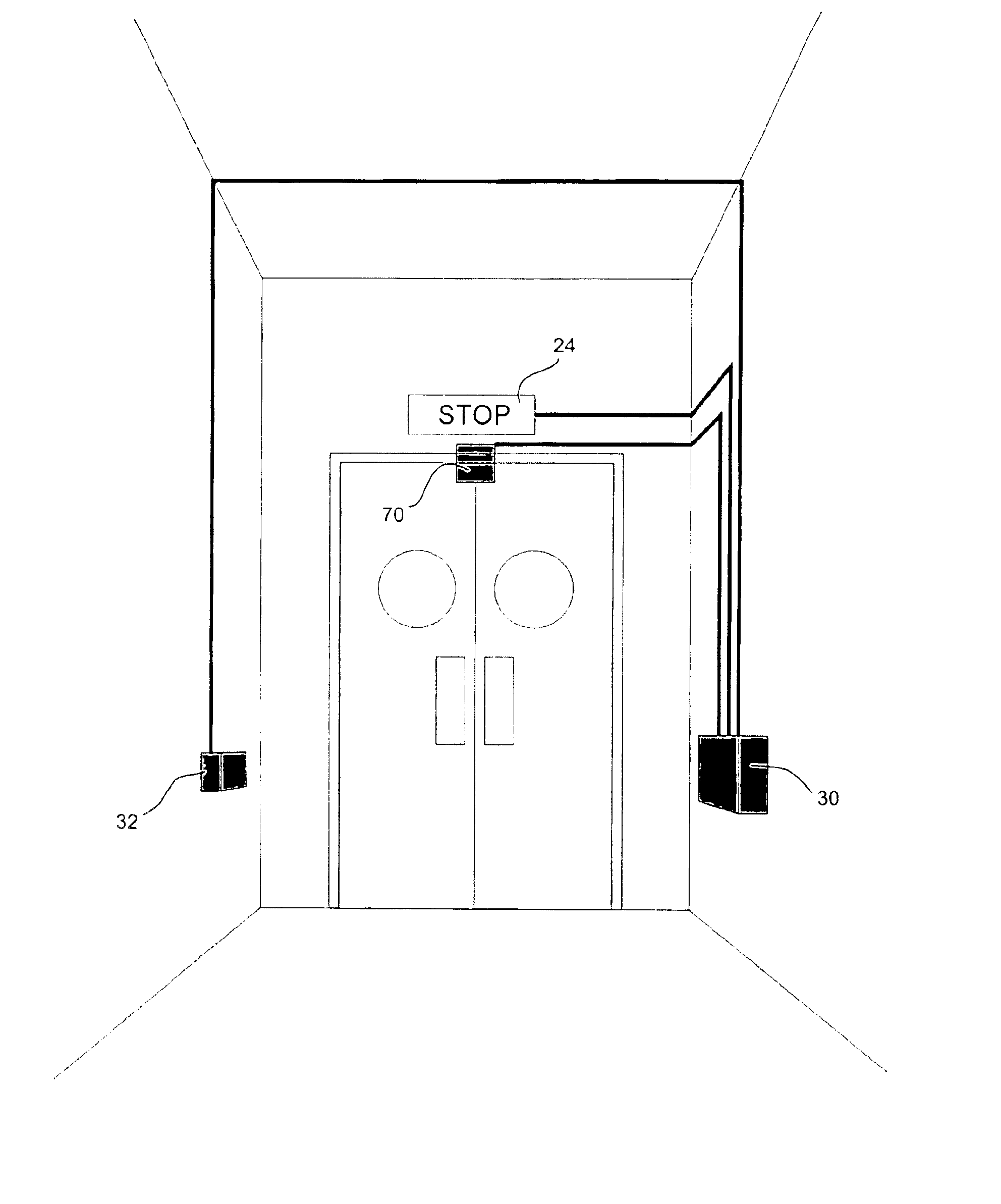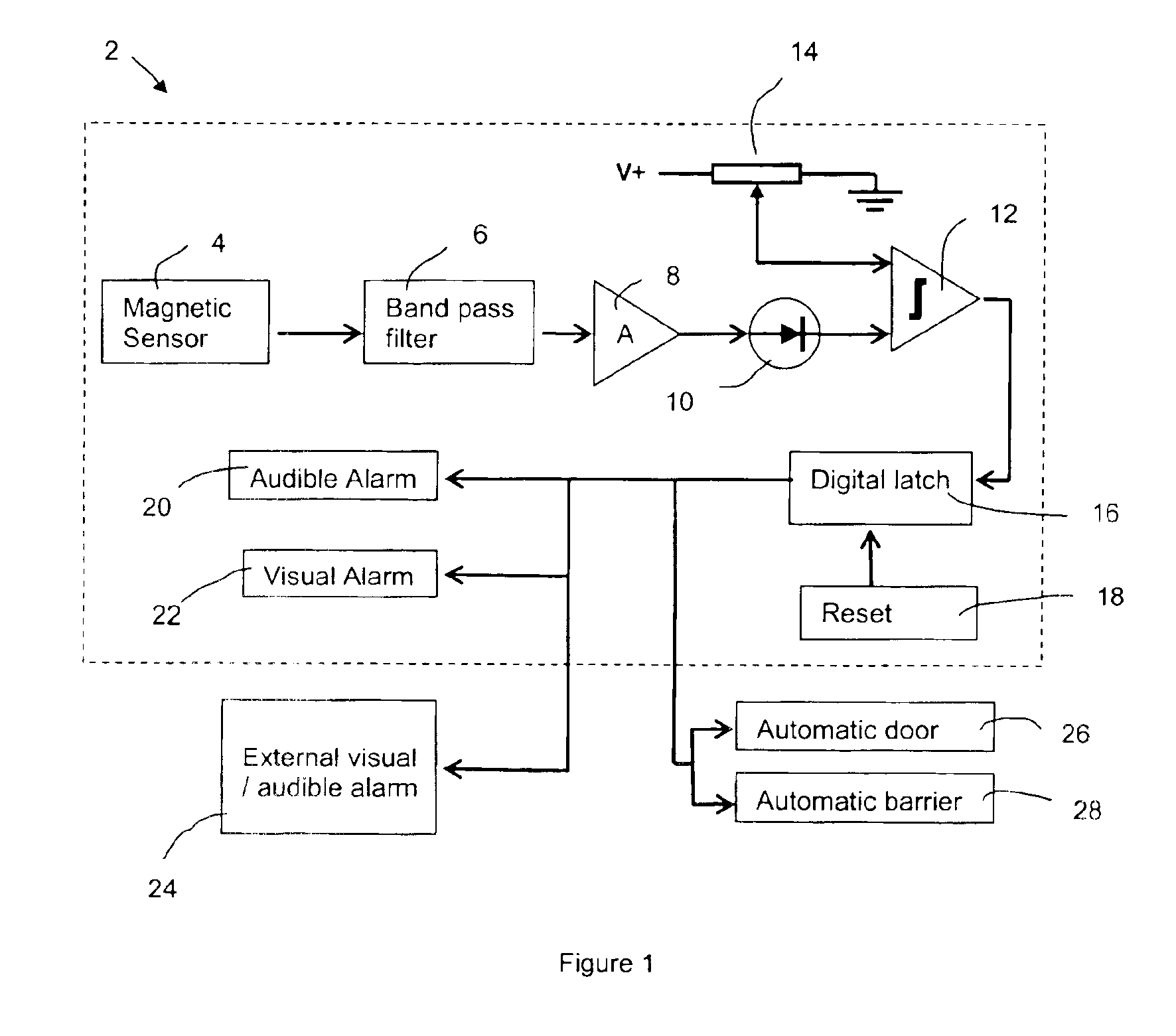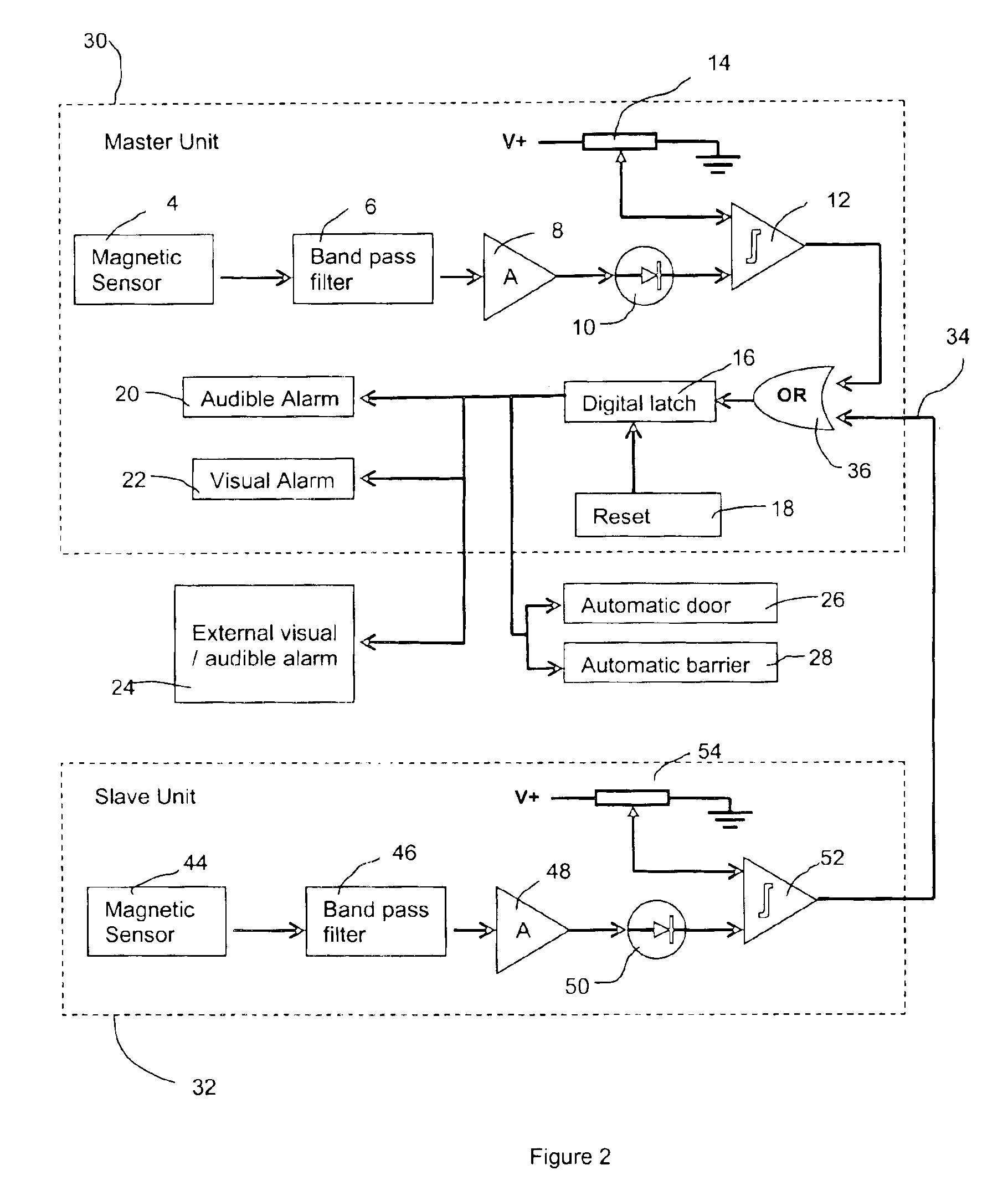Ferromagnetic object detector
a technology for detecting objects and ferromagnetic objects, applied in the direction of instruments, burglar alarm mechanical actuation, burglar alarm by hand-portable objects removal, etc., can solve the problems of affecting the field, affecting the field, and affecting the field,
- Summary
- Abstract
- Description
- Claims
- Application Information
AI Technical Summary
Benefits of technology
Problems solved by technology
Method used
Image
Examples
Embodiment Construction
[0057]Referring to FIG. 1, the ferromagnetic object detector (2) according to the present invention comprises a magnetic sensor (4), such as a fluxgate sensor, a magneto-resistive sensor, a magneto-impedance sensor, a hall-effect sensor, or a galvanic coil sensor, that outputs a signal that is a measurement of the magnetic field incident upon the sensor (4). Since the ferromagnetic object detector (2) will invariably be installed in a fixed position, for most of the time the sensor (4) will register a largely unchanging ambient magnetic field due to the earth. This constitutes a large offset on the output of the sensor. The signal due to the ambient field can be removed using a high pass filter. Furthermore, in a hospital environment, for example, there is a lot of ambient magnetic noise particularly at the power supply frequency and its harmonics. These frequencies are above those of interest so they may be removed with a low pass filter. The filters collectively constitute a band-...
PUM
 Login to View More
Login to View More Abstract
Description
Claims
Application Information
 Login to View More
Login to View More - R&D
- Intellectual Property
- Life Sciences
- Materials
- Tech Scout
- Unparalleled Data Quality
- Higher Quality Content
- 60% Fewer Hallucinations
Browse by: Latest US Patents, China's latest patents, Technical Efficacy Thesaurus, Application Domain, Technology Topic, Popular Technical Reports.
© 2025 PatSnap. All rights reserved.Legal|Privacy policy|Modern Slavery Act Transparency Statement|Sitemap|About US| Contact US: help@patsnap.com



